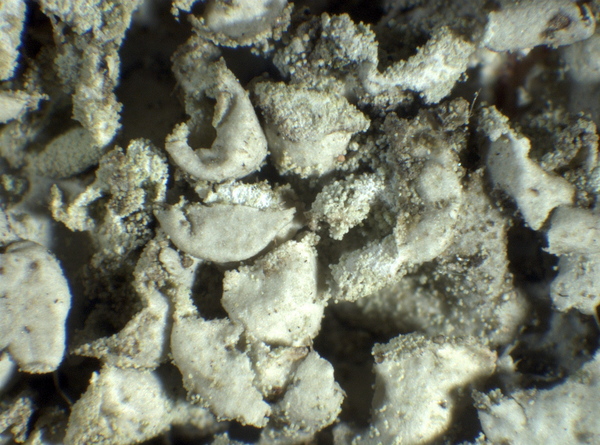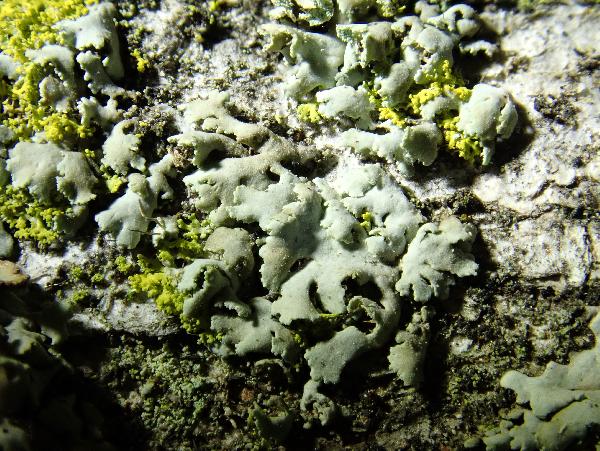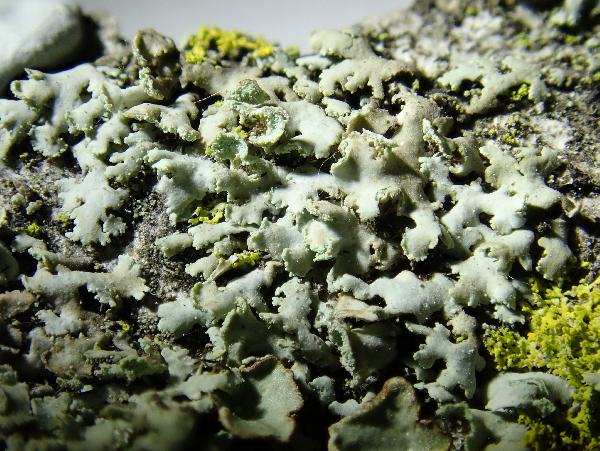Physcia vitii Nádv.
Stud. Bot. Cech., 8: 94, 1947.
Synonyms:
Distribution: N - Frl (Tretiach & Molaro 2007), Ven (Nimis & al. 1996c, Lazzarin 2000), Lomb (Valcuvia & Gianatti 1995, Grieco & Groppali 1995, Valcuvia & Brusoni 1996, Brusoni & al. 1997, Zocchi & al. 1997, Roella 1999, Brusoni & Valcuvia 2000, Arosio & al. 2003, Valcuvia & Truzzi 2007b, Furlanetto 2010), Piem (Piervittori 1998, 2003, Griselli & al. 2003, Furlanetto 2010, Giordani & Malaspina 2016), Emil (Gasparo & Tretiach 1996, Nimis & al. 1996, Valcuvia & Savino 2000, Fariselli & al. 2020), Lig (Brunialti & Giordani 2003, Giordani 2006, Giordani & Incerti 2008). C - Tosc (Loppi & al. 1996), Marc (Candotto & Tretiach 2013b), Laz (Ravera & al. 2000, Munzi & al. 2007. 2012), Mol (Paoli & al. 2015), Sar (Rizzi & al. 2011, Di Nuzzo & al. 2022). S - Camp (Aprile & al. 2003b), Cal (Puntillo 1996), Si (Schicchi & al. 1997, Ottonello & Isocrono 2004, Campisi & al. 2020).
Description: Thallus foliose to subfruticose, heteromerous, dorsiventral, narrow-lobed, not rosette-forming, the confluent thalli often forming irregular patches. Lobes shortly strap-shaped, ascending, canaliculate, 0.3-1.5(-3) mm wide, whitish to very pale brown, emaculate, without marginal cilia, with terminal, hood-shaped soralia. Lower surface whitish, with sparse, simple rhizines. Upper and lower cortex paraplectenchymatous; medulla white. Apothecia very rare (not observed in Italian material). Photobiont chlorococcoid. Spot tests: upper cortex K+ yellow, C-, KC-, P- or P+ faintly yellow; medulla K-, C-, KC-, P-. Chemistry: upper cortex with atranorin. Note: a species resembling a very stout P. adscendens, but without marginal cilia, with an emaculate upper surface and with a paraplectenchymatous lower cortex, most common in heavily polluted areas of the Po-plain. I wonder whether this name, at least as it was applied by Italian authors, does not refer to a morph of P. adscendens induced by environmental stress, especially eutrophication.
Growth form: Foliose, narrow lobed
Substrata: bark
Photobiont: green algae other than Trentepohlia
Reproductive strategy: mainly asexual, by soredia, or soredia-like structures (e.g. blastidia)
Poorly known taxon in need of further study
Commonnes-rarity: (info)
Alpine belt: absent
Subalpine belt: absent
Oromediterranean belt: absent
Montane belt: absent
Submediterranean belt: rare
Padanian area: rather common
Humid submediterranean belt: rare
Humid mediterranean belt: absent
Dry mediterranean belt: absent
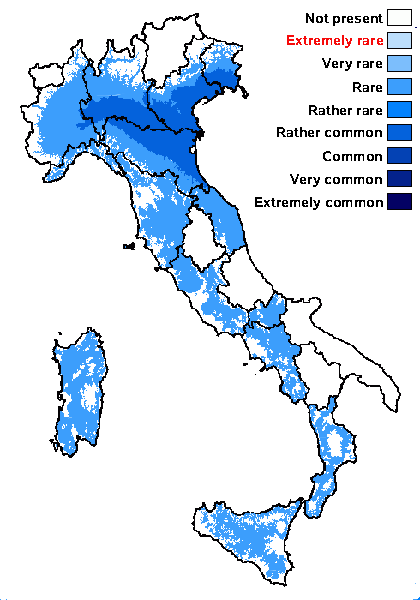
Predictive model
Herbarium samples
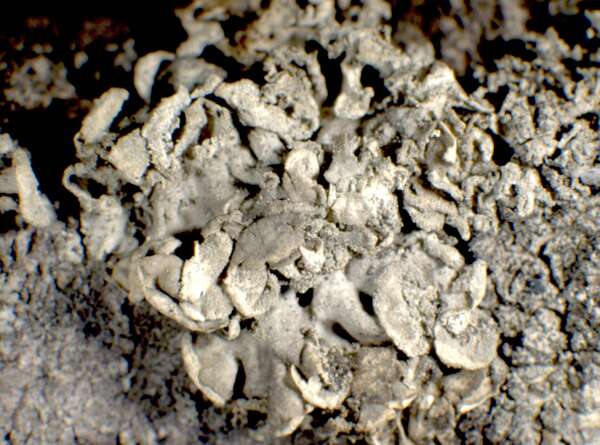

P.L. Nimis; Owner: Department of Life Sciences, University of Trieste
Herbarium: TSB (10606)
2001/12/05
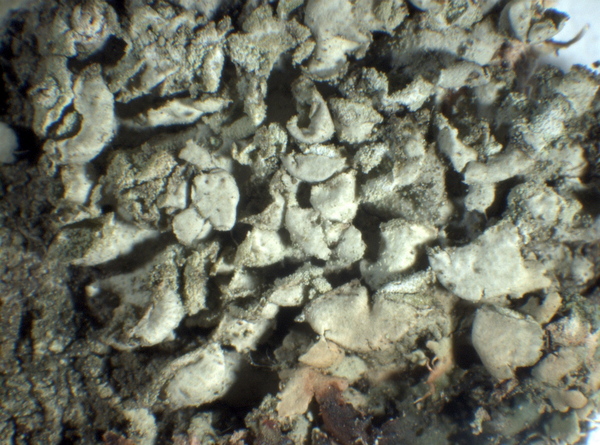

P.L.Nimis; Owner: Department of Life Sciences, University of Trieste
Herbarium: TSB (36161)
2008.03.06
Growth form: Foliose, narrow lobed
Substrata: bark
Photobiont: green algae other than Trentepohlia
Reproductive strategy: mainly asexual, by soredia, or soredia-like structures (e.g. blastidia)
Poorly known taxon in need of further study
Commonnes-rarity: (info)
Alpine belt: absent
Subalpine belt: absent
Oromediterranean belt: absent
Montane belt: absent
Submediterranean belt: rare
Padanian area: rather common
Humid submediterranean belt: rare
Humid mediterranean belt: absent
Dry mediterranean belt: absent

Predictive model
| Herbarium samples |


P.L. Nimis; Owner: Department of Life Sciences, University of Trieste
Herbarium: TSB (10606)
2001/12/05


 INDEX FUNGORUM
INDEX FUNGORUM
 GBIF
GBIF
 DOLICHENS
DOLICHENS
